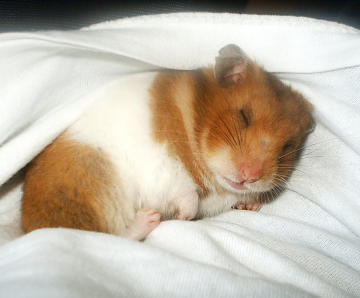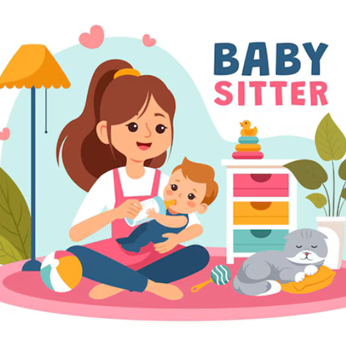Know 10 Things Before Adopting A Hamster
Hamsters are mammals belong to the rodent family; they are the most popular pets in the United States Of America with 5 of the common species being Syrian Hamster, Dwarf Campbells Russian Hamster, the Dwarf Winter White Russian Hamster, the Roborovski Hamster and the Chinese Hamster.
Know 10 things before you adopt a hamster:
1) Keep the cage ready before you bring the hamster home; you could make the best selection going through books, websites and pet shops. Select a square cage with solid flooring. They are brilliant escape artists; so be careful while letting the hamster in and when inside, making sure the latch is secure. Ensure that the cage is not of a material like wire which the pet hamster can chew through. Provide a little sleeping house, tubes to crawl through and a solid hamster’s wheel intertwined with paper to avoid injury. Provide a small bowl of sand for the hamster to use as potty; ensure you clean the sand every few days.
2) Hamsters are loners and it is best to provide a cage for every hamster, as 2 hamsters could fight and even kill each other.
3) Feed the hamster with good quality commercial food like Harry hamster food and small servings of fresh veggies like carrots, cucumbers, apples and grapes; avoid iceberg lettuce and chocolates or any food you are not sure of. Make sure to provide a water bottle that not only keeps the water clean, but also prevents getting into the bedding material. Offer good treats like plain Cheerios and whole-wheat toast.

4) Most hamsters live for 2-3 years with proper care; children should handle them only under an adult’s supervision.
5) Hamsters sleep during the day and are active in the evening; do not interfere with this cycle as it could cause stress, biting, health problems and also an early death.
6) Understand that an hamster’s teeth is continually growing and it is best to provide them hard things like wooden blocks from a pet store, paper towel rolls, and an occasional piece of dog biscuit to gnaw on. Take your hamster to a veterinarian if it does not eat properly to have its teeth trimmed.
7) Use Carefresh or Aspen bedding; avoid cedar or pine that could damage the liver, respiratory system, and cause other health problems. Use plain unscented toilet paper for nesting material and avoid fluffy nest bedding that a hamster could accidentally ingest to cause bowel blockage, or tangle a limb in it.

8) Do not handle or pick up a hamster; they could bite. They also bite when startled, woken up from deep sleep and when they smell another animal or food in your arm. You could make a hamster crawl into your hand by put a couple of sunflower seeds in a little container held in the hand. Avoid handling the hamster in the presence of other pets like cats, dogs and ferrets.
9) You could help your hamster exercise by using a hamster ball whose cover is tightly secured with tape; keep the hamster in the ball for just 30 minutes and avoid kicking or rolling the ball as it could stress the hamster.
10) Illness progresses fast in small animals like hamsters; if your hamster is sick take it to a vet that treats small animals to save its life.
Image Courtesy: Google
Take the next step toward your goals
Share your requirement and find the best care providers in your area
-
Looking for a caretaker’s job? Build your profile and get in touch with families in your vicinity.
-
Discover nannies, babysitters, cooks, housekeepers, pet sitters, and elder care under one roof.
-
Get all the support you need to run a successful care center.
-
Search for appropriate centers near you depending on your needs.
Care Corner Insights: Blog Library

12 Easy After-School Snack Ideas for Kids Who Get Hungry Quickly
School’s out, and the hunger hits hard! If your little ones come home ravenous and ready to raid the kitchen, you’re not alone. After-school snack time is prime time for refueling, recharging, and maybe even sneaking in a little nutrition. So here ar

Vegetarian Home Cook Services in Sunnyvale, CA: North & South Indian Meal Prep for Busy NRIs
Between work, family, and daily responsibilities, finding time to cook fresh meals can be difficult. That’s when a vegetarian home cook service in Sunnyvale makes life easier—bringing authentic North and South Indian dishes straight to your table. T

Hiring a Live-In Nanny in Plano, TX: A Practical Guide for NRI Households
For NRI families living in Plano, TX, raising children while managing work and household responsibilities can feel overwhelming. Many parents find that hiring a live-in nanny provides the right balance of support, convenience, and cultural comfort. U

Daycares in Fremont, CA for Indian Toddlers: Curriculum, Food Policies & Waitlists
You’ve probably met them — the parents at the park chatting about Montessori vs. play-based learning while handing their toddler a homemade paratha. The ones who ask every daycare in Fremont if they serve vegetarian meals. And yes, the ones who have

Babysitters in Jersey City, NJ for NRI Parents: Last-Minute, Weekend & Evening Options
You’ve probably seen them — the parents juggling grocery bags in one hand and a phone call to grandma in India in the other, while trying to keep their toddler from running into the road. The ones who cancel dinner plans because the babysitter bailed

Best Nanny Services in Edison, NJ for Indian Families: Costs, Language, and Cultural Fit
Edison, NJ, is home to one of the largest Indian communities in the U.S., and finding a nanny here often means looking for more than just childcare skills. For Indian families, cultural understanding, language fluency, and traditional values play a b

What Is Helicopter Parenting? How It Affects Children and Ways to Avoid It
You’ve probably seen them. The parents at the playground who shadow every move, wiping invisible germs off the slide before their child touches it. The ones who fill out job applications for their teens. And yes, the ones who email college professors

Are Weighted Blankets Safe for Children? Pros and Cons Explained
Weighted blankets have become a cozy trend in recent years. From helping adults sleep better to calming anxiety, they’ve earned a spot in many households. But when it comes to kids, especially the little ones, parents often ask: Are weighted blankets

How to Update Your Profile for Back-to-School Season (For Parents and Teachers)
Hey there, school season warriors! Whether you're a parent prepping your little ones for a new academic year or a teacher gearing up to welcome a fresh batch of curious minds, now’s the perfect time to give your Sulekha Care Services profile a little

Are Weighted Blankets Safe for Children? Pros and Cons Explained
Weighted blankets have become a cozy trend in recent years. From helping adults sleep better to calming anxiety, they’ve earned a spot in many households. But when it comes to kids, especially the little ones, parents often ask: Are weighted blankets